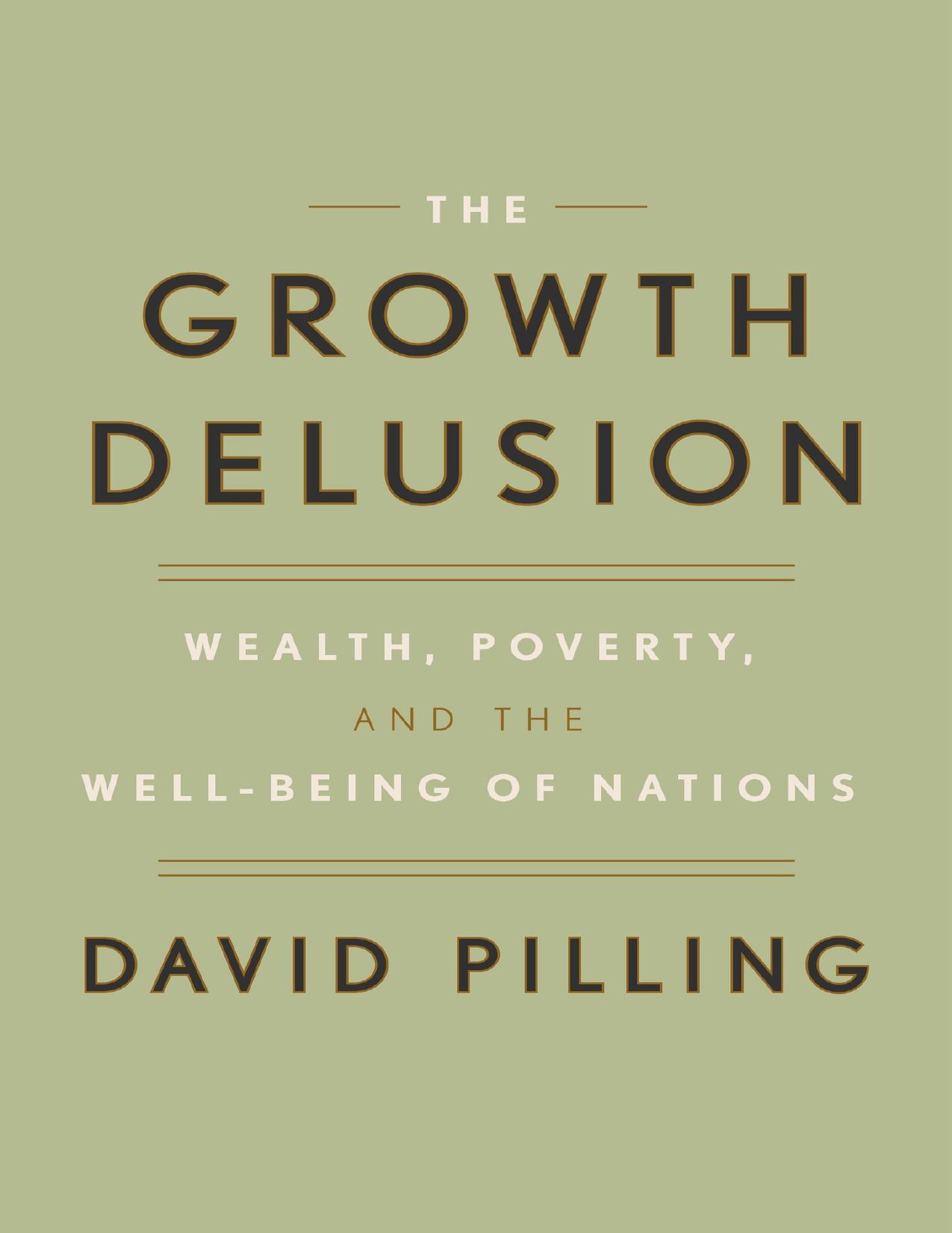The Growth Delusion by David Pilling

Author:David Pilling
Language: eng
Format: epub, pdf
Publisher: Crown/Archetype
Published: 2018-01-30T05:00:00+00:00
The Communist Party has justified its monopoly on power by its track record of bringing ever-greater abundance to what had been a desperately poor peasantry. For party officials progress through the communist ranks has—as with the fictional Li Dakang—been determined by the ability to conjure economic growth at a local level. For years before the recent slowdown, it was almost an article of faith that growth must never be allowed to dip below 8 percent lest that unleash a fury of social protest. In the jostling for supreme power, only those party officials whose provinces expanded fast enough could hope to scale the Communist Party’s top echelons.
Niu is skeptical about growth at all costs. Yet, like many free thinkers in his country, he has learned how to couch his observations in language that does not openly challenge Communist Party doctrine. He starts not by burying growth, but by praising it. “GDP is a very important instrument to measure a nation’s wealth. So far there is no alternative method to rival it,” he says, beaming. “As you know, GDP has been called one of the greatest inventions of the twentieth century. Although the current method of calculating GDP has its defects, no better way has yet been invented.”
When China began to study the United Nations System of National Accounts in 1986, it reconstructed its national income accounts right back to 1952, just three years after the communists took over in 1949. For nearly a quarter of a century Mao Zedong, founding father of the People’s Republic, had led a ruinous experiment in collectivization and would-be economic liftoff. Mao’s Great Leap Forward (1958–62) was an emblematic, if still mostly hushed-up, catastrophe. In order to catch up with industrial nations, Mao had ordered the collectivization of farming into supposedly more efficient units and the establishment of what turned out to be useless backyard furnaces producing steel from pots and pans. Though crop levels fell as a result of the misguided experiment, local governments misstated their harvests in order to comply with centrally mandated targets. They handed over pretend surpluses and China continued to export grain to earn foreign currency. With only the crudest of measurements at their disposal, many central planners had little idea of what was really going on. The result of industrialization-at-any-cost was wholesale famine in which as many as 46 million people perished.4
Historical data, calculated by the new growth metric, showed that China’s performance during the communist years had been extremely erratic, with growth above 10 percent in some years, followed by periods of catastrophic recession. In 1961, at the height of Mao’s Great Leap Forward, the economy shrank by an astonishing 27 percent. But from the early 1990s, by which time the new accounting practices had been fully adopted, the picture changed. With a consistency that has often been called into question, China registered growth of around 10 percent in virtually every year from 1992 to 2010.5 In the process, it catapulted itself from poor peasant economy to modern powerhouse.
Download
This site does not store any files on its server. We only index and link to content provided by other sites. Please contact the content providers to delete copyright contents if any and email us, we'll remove relevant links or contents immediately.
International Integration of the Brazilian Economy by Elias C. Grivoyannis(75671)
The Radium Girls by Kate Moore(11636)
Turbulence by E. J. Noyes(7717)
Nudge - Improving Decisions about Health, Wealth, and Happiness by Thaler Sunstein(7261)
The Black Swan by Nassim Nicholas Taleb(6784)
Rich Dad Poor Dad by Robert T. Kiyosaki(6194)
Pioneering Portfolio Management by David F. Swensen(6089)
Man-made Catastrophes and Risk Information Concealment by Dmitry Chernov & Didier Sornette(5672)
Zero to One by Peter Thiel(5505)
Secrecy World by Jake Bernstein(4404)
Millionaire: The Philanderer, Gambler, and Duelist Who Invented Modern Finance by Janet Gleeson(4114)
The Age of Surveillance Capitalism by Shoshana Zuboff(4000)
Skin in the Game by Nassim Nicholas Taleb(3978)
The Money Culture by Michael Lewis(3857)
Bullshit Jobs by David Graeber(3847)
Skin in the Game: Hidden Asymmetries in Daily Life by Nassim Nicholas Taleb(3736)
The Dhandho Investor by Mohnish Pabrai(3573)
The Wisdom of Finance by Mihir Desai(3538)
Blockchain Basics by Daniel Drescher(3341)
